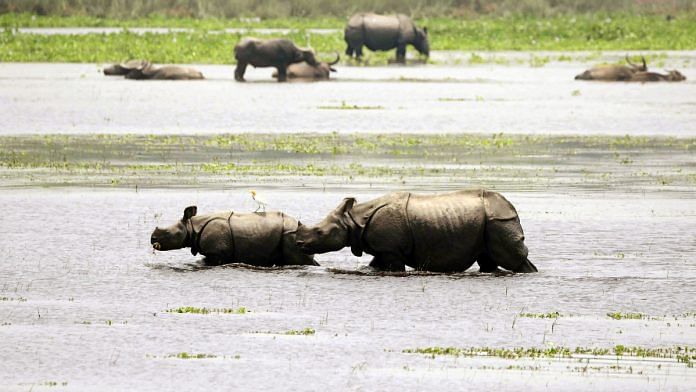New Delhi: Climate change has already altered the relationship between humans and wildlife — through changed distribution patterns, behaviour, and increased interaction. This further amplifies conflict between the two, concludes a study by Nature Climate Change.
With the study of 49 “climate-driven” conflicts spanning six continents and all five oceans, researchers found that climate–induced worsening of resource scarcity was a deciding factor in intensifying conflict, cited in over 80 per cent of cases.
The research gave the example of tapirs (Tapirus bairdii) in Mexico and elephants (Loxodonta africana) in Tanzania and Kenya, where droughts lead the animals to move into villages in search of food or water, resulting in crop damage and retaliatory killings.
The Asiatic black bear has been culled due to attacks on humans. The arid region of South America, with the onset of La Nina, sees increased livestock predation and a higher presence of carnivores. The barnacle geese in Scotland have also been documented as coming into conflict with farmers owing to a warming planet.
“When changes in climate contribute to shifts in resource distributions or scarcity, animals may relocate to human-dominated areas in search of alternative resources,” states the study.
This is dangerous not only for animals but for humans too. According to state department data, 244 people lost their lives to leopard attacks in Uttarakhand between 2000 and 2010. Last year, at least 20 people died, according to a report in Mongabay.
In South Sudan, fatal attacks by crocodiles on humans and livestock hit a high during the dry season as herders are forced to move livestock to riverbanks for water and pasture. “With ongoing desertification and the increased frequency of drought in this region, crocodile attacks are expected to rise over time due to climate change,” the paper added.
As climate change reorganises the placement of seasons and their duration, it also shifts the timings of events like hibernation and migration. The black bear’s “active season” has grown longer, thus pushing it to seek “additional resources” in human-dominated areas –– increasing exposure and causing deaths. Among blue whales, a marine heat wave changed their migration patterns and caused them to remain in ship-heavy waters for longer periods of time, leaving them vulnerable to collisions.
Resource scarcity
A changed landscape, brought on by climate damage, changes the way land is used. Subsistence agricultural production –– small-scale farming, when farmers grow crops to meet needs on small holdings –– has historically been most impacted by negative human-wildlife interaction, says the report.
Climate change worsens these conflicts by magnifying resource scarcity on land that is shared by humans and wildlife.
Farmers are forced to utilise protected areas for activities such as cattle grazing and crop production when resources are scarce. This kind of spatial distribution was present in 69% of case studies.
Climate change also opens up avenues for corporations to extract regions with, say, mining potential. “Beyond the impacts on patterns of subsistence resource use, climate change may also make new regions accessible to extractive industries and use by large corporations, with adverse effects on human–wildlife interactions,” reads the report. This, too, would create further opportunities for conflict.
Mitigation of adverse effects
The report also found that climate change-related governance policies did not serve as conflict aggravators. Moreover, policies intended to mitigate the adverse effects of climate change can improve human-wildlife relations.
For example, enacting policies that discourage land development at “wildland-urban interfaces” will reduce livestock predation by carnivores. On the other hand, if policies increase the spatial overlap between humans and wildlife, the inverse will take place.
The study suggests that including a comprehensive understanding of climate in conservation practices will help in establishing patterns of conflict and in predicting conflict.
In the case of land management, it recommends transboundary conservation initiatives –– building singular conflict-mitigation programmes across various national parks and privately owned forests. This would also consist of limiting agricultural production in wildlife-heavy areas.
Also read: After US scientists, WMO too says El Niño could raise temperatures globally later this year



